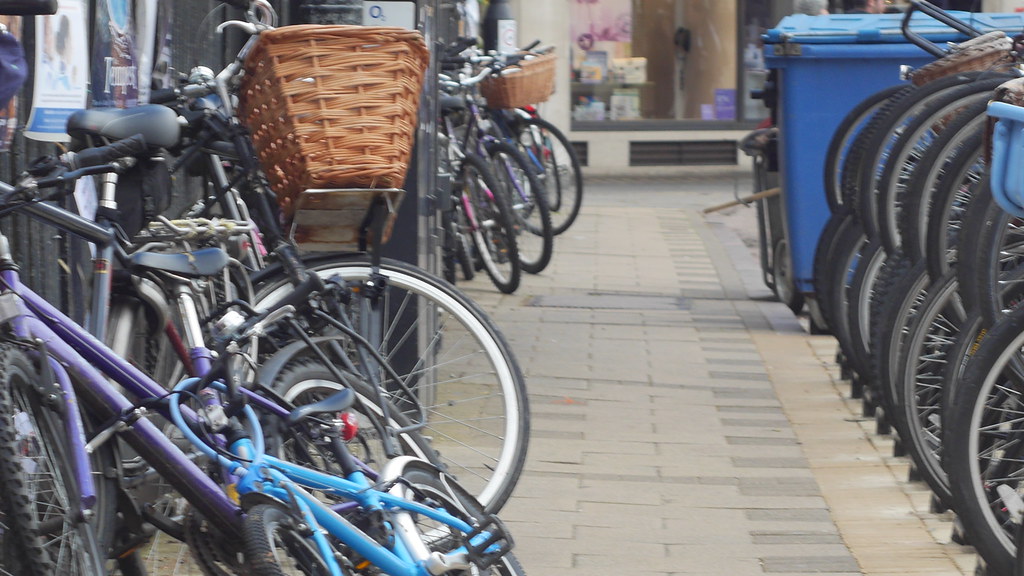
Hey there, fellow humans! Ever looked at a bicycle and thought, “That’s just a way to get from point A to point B”? Well, buckle up (or, you know, helmet up!), because you’re about to discover that cycling is so much more than just pedaling. It’s a universe of history, innovation, community, and pure, unadulterated joy that touches nearly every corner of our lives. From intense races to leisurely spins, and even vital volunteer work, the world of cycling is absolutely brimming with amazing stories and facts that will make you see two wheels in a whole new light.
We’re talking about an activity that over half the human population knows how to do! Imagine that – a global language spoken through spokes and pedals. It’s been around for ages, constantly evolving, and continues to be a powerful force for change, health, and adventure. Whether you’re a seasoned cyclist or just curious about what makes people so obsessed with bikes, you’re in for a treat as we unravel some truly mind-blowing aspects of this incredible pastime.
So, get ready to dive deep into the fascinating world of cycling. We’re going to explore everything from how these incredible machines became part of our history (even wartime history!) to the nitty-gritty of what makes a great ride, and even how you can lend a hand at awesome events like the Honolulu Century Ride. Trust us, your perspective on bikes is about to get a serious upgrade – and who knows, you might just find yourself itching to hop on a saddle by the end of it!
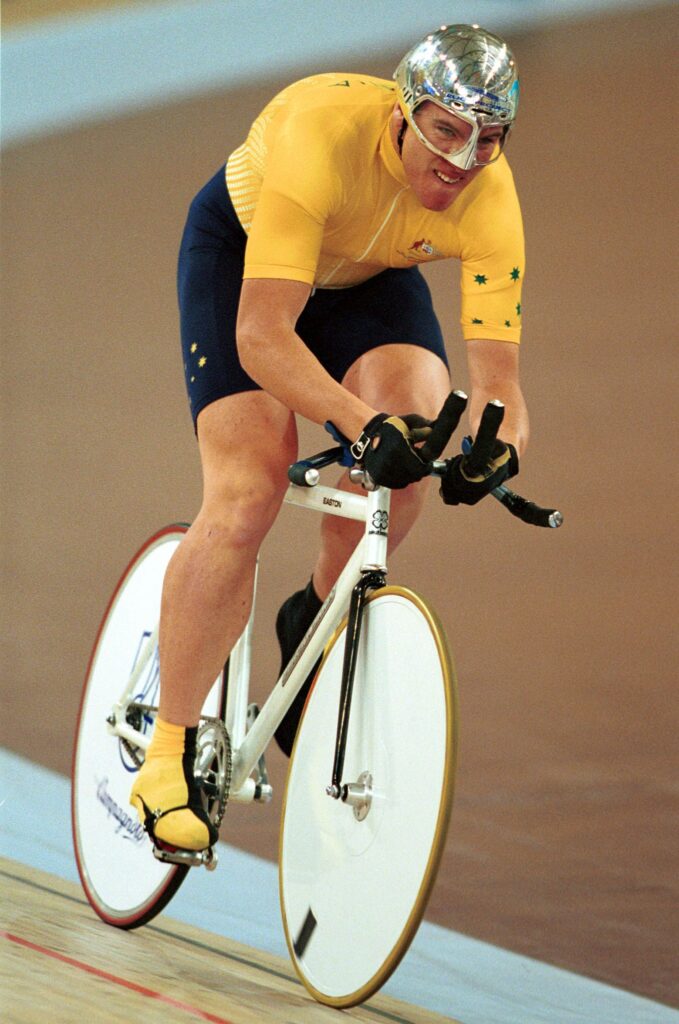
1. The Surprising History of Cycling (and its role in warfare!)
Let’s kick things off by rolling back the clock! Cycling didn’t just appear out of nowhere; it really got its groove on and became super popular in Europe and North America during the latter part of the 19th century, especially in that final decade. It’s wild to think that this simple machine has such deep roots and has evolved into something over 50 percent of the human population can now master.
But here’s a twist you might not expect: the bicycle wasn’t just for leisurely rides in the park. Oh no, it also played a surprisingly significant role in warfare! Imagine this, the humble bike took over many functions previously held by horses, acting as a method of reconnaissance and even transporting soldiers and supplies right into combat zones.
We’re not talking about a one-off thing either. Both sides in the Second Boer War used bicycles for scouting, which is pretty clever when you think about it. Then, in World War I, countries like France, Germany, Australia, and New Zealand got in on the action, using bikes to move troops. Fast forward to Japan’s 1937 invasion of China, and they rolled out an impressive 50,000 bicycle troops! These forces were absolutely instrumental in Japan’s speedy march through Malaya in World War II. Even the British had their own airborne “Cycle-commandos” rocking folding bikes!
Communist forces during the Vietnam War heavily relied on bicycles as cargo carriers along the Ho Chi Minh Trail, showcasing their incredible utility in tough conditions. And get this – Switzerland actually maintained a regiment of bicycle troops until as recently as 2003! So, next time you see a bike, remember it’s not just a toy; it’s a vehicle with a seriously storied past.
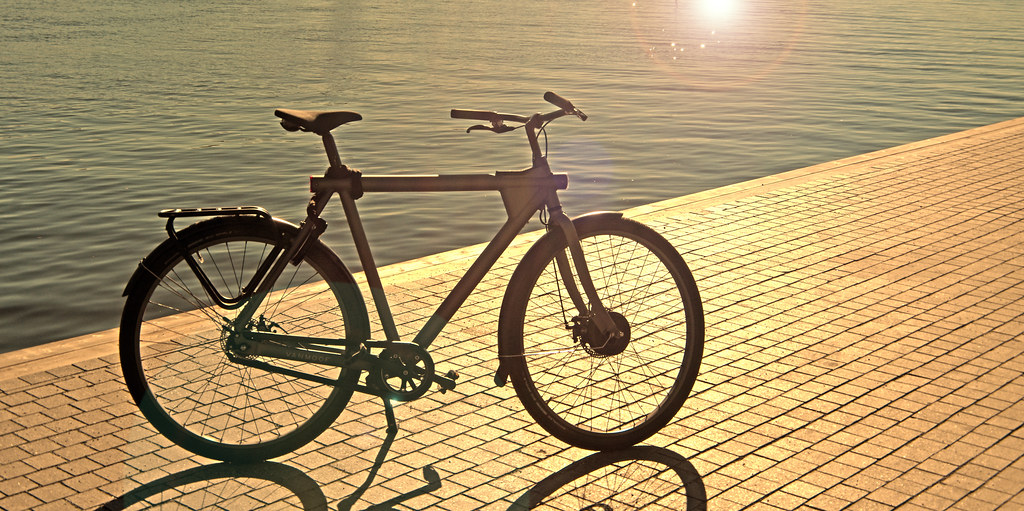
2. Gear Up! Understanding Your Bike’s Essential Equipment
Alright, let’s talk tech! Bicycles come in a dazzling array of types, each designed for a specific purpose. You’ve got your everyday utility bikes, sleek road bikes built for speed, rugged mountain bikes ready for adventure, versatile gravel bikes for mixed terrain, and even e-bikes that give you a little motorized boost. And guess what? The price tag for a new bicycle can swing wildly, from a budget-friendly US$50 all the way to over US$20,000 for top-tier models – with the custom Madone by Damien Hirst fetching an eye-watering US$500,000!
When it comes to the ride, there’s a big difference between, say, a utility bike and a road bike. Utility bicycles, often the most common vehicle for road transport in many countries, are designed for comfort and practicality. They come with relaxed geometry frames to shield the rider from road shocks and make steering a breeze at low speeds. Plus, they’re usually kitted out with accessories like mudguards, pannier racks, and lights, extending their usefulness for daily errands. It’s no wonder countries like Denmark and the Netherlands, which boast the most bicycles per capita, rely so heavily on them for everyday transport!
Road bikes, on the other hand, are all about speed and efficiency on paved roads. They feature lightweight frames, super skinny tires, drop handlebars, and narrow saddles, all designed to make you bend forward more. This posture lets you tap into stronger muscles, particularly your gluteus maximus, and dramatically reduces air resistance, allowing you to fly! They tend to have a more upright shape and a shorter wheelbase, which makes them super mobile but a bit trickier to ride slowly – it’s a trade-off for that sweet, sweet speed.
And let’s not forget the drivetrain! For beginners, a middle-grade dérailleur usually does the trick, though many utility bikes rock hub gears. If you’re planning on conquering some serious hills, a triple-chainrings crankset gear system might be your best friend. Otherwise, the lighter, simpler, and often less expensive double chainring is the go-to, even for high-end race bikes. Of course, you can also go minimalist with fixed-wheel bikes. Oh, and for serious racing, the Union Cycliste Internationale (UCI) even has rules: a legal race bike can’t weigh less than 6.8 kg (14.99 lbs), keeping things fair and safe!
Beyond the bike itself, there’s a whole world of accessories to consider. Many road and mountain bikes feature clipless pedals, which, when paired with special shoes, let you both push *and* pull for maximum power. Other must-haves might include front and rear lights, bells or horns for safety, child carrying seats, cycling computers with GPS, sturdy locks, and various bags like panniers for carrying your gear. For quick fixes, a pump, puncture repair kit, spare inner tube, tire levers, and a set of Allen keys are essential. And to truly optimize your ride, special shoes, gloves, and shorts can make a huge difference in comfort and performance. In wet weather, waterproof clothing like a cape, jacket, trousers, and overshoes are a lifesaver, and high-visibility clothing is always a smart move to stay safe around motor vehicles. So much to think about, right?

3. Mastering the Ride: Essential Cycling Skills for Every Journey
Learning to ride a bike might seem like a childhood rite of passage, but there’s a whole universe of skills beyond just balancing! Many schools and police departments, for example, run incredible educational programs. These efforts are designed to instruct children in bicycle handling skills and, crucially, to introduce them to the rules of the road as they apply to cyclists. In some places, these fun and educational sessions are known as “bicycle rodeos,” or structured schemes like “Bikeability” in the UK.
But the learning doesn’t stop when you grow up! Education for adult cyclists is readily available from organizations such as the League of American Bicyclists, offering resources and guidance for those looking to refine their riding. After all, safely navigating busy streets requires more than just knowing how to pedal; it demands a strategic approach to sharing the road.
One popular strategy for riding efficiently and safely in motor vehicle traffic is called “vehicular cycling.” This approach suggests that cyclists should occupy road space just as a car does, making their presence clear and predictable. It’s a bold philosophy that empowers riders to be an integrated part of the traffic flow. Alternatively, in countries where cycling is incredibly popular, like Denmark and the Netherlands, cyclists are often segregated into dedicated bike lanes. These lanes can be right at the side of the main highways or, even better, completely separate, offering a safer and more comfortable experience away from cars.
And for the younger generation, developing these crucial skills is sometimes formalized. Many primary schools participate in a national road test where children individually complete a circuit on roads near the school while being observed by testers. It’s a fantastic way to ensure that kids are not only confident on their bikes but also knowledgeable about how to share the road responsibly, setting them up for a lifetime of safe and enjoyable cycling adventures.
Read more about: Ready to Ride? 14 Epic Used Mountain Bike Deals and Smart Buys Just Waiting for You!

4. Building Better Rides: The Evolution of Cycling Infrastructure
Here’s a head-scratcher: how do you design roads to keep everyone happy – cyclists, pedestrians, *and* motorists? It’s a complex puzzle, and historically, different places have leaned in different directions, leading to some serious conflicts. Some jurisdictions have definitely given priority to motorized traffic, designing cities with one-way street systems, free-right turns, high-capacity roundabouts, and slip roads. While this might seem efficient for cars, it often comes at the expense of cycling, making it less safe and less appealing.
Thankfully, many other places are now recognizing the immense benefits of sharing priority with cyclists. They’re actively encouraging more cycling by applying varying combinations of traffic calming measures, which help limit the impact of motorized transport. Even better, they’re investing in building bike lanes, bike paths, and cycle tracks – dedicated spaces that make cycling much safer and more enjoyable. The rise of computer vision and street view imagery is even providing significant potential to assess and improve this infrastructure, helping us build smarter, cyclist-friendly cities.
It’s pretty clear: where motor vehicles were given priority, cycling has tended to decline. But in jurisdictions where cycling infrastructure was thoughtfully built and maintained, cycling rates have either remained steady or, even better, increased! It’s almost like people prefer to cycle when it’s safe and easy. Sometimes, though, extreme measures pop up, like in Shanghai in December 2003, where bicycle travel was temporarily banned on a few city roads – a wild thought for a city where bikes were once the dominant mode of transport!
Beyond the lanes themselves, cycle-parking facilities are a huge deal. In areas where cycling is popular and encouraged, you’ll find everything from basic bicycle stands to lockable mini-garages and even patrolled cycle parks, all designed to reduce the risk of theft. Conversely, an absence of secure cycle-parking is a recurring complaint from cyclists in cities where cycling has a low modal share. Local governments are also getting creative by permitting bicycles to be carried on public transport or providing external attachment devices on buses, further promoting cycling as a viable option for longer journeys.
Now, let’s talk about the gold standard: dedicated cycling infrastructure. While some cities boast extensive networks, these paths often have to be shared with in-line skaters, scooters, skateboarders, and pedestrians, which can sometimes lead to new kinds of friction. The legalities around these dedicated facilities, including liability in collisions, also vary widely by jurisdiction. And yes, there’s even some debate about how truly safe various types of separated facilities are. But one thing is for sure: bicycles are a sustainable mode of transport, especially perfect for urban use and those relatively shorter distances when you’re just trying to get around.
Case studies and good practices from European cities and some worldwide examples, which champion and stimulate this kind of functional cycling, can be found at Eltis, Europe’s portal for local transport. And for a truly convenient option, a number of cities, including Paris, London, and Barcelona, now have wildly successful bike hire schemes! These typically feature utilitarian city bikes that lock into handy docking stations, which you can release for a payment for set time periods. For instance, in London, initial hire access costs £2 per day, with the first 30 minutes of each trip free, and then £2 for each additional 30 minutes until the bike is returned.
But if you want to see cycling infrastructure done right, look no further than the Netherlands! It’s literally a cyclist’s paradise. Many roads there feature one or even two separate cycleways alongside them, or clear cycle lanes marked on the road. And get this: where these amazing bike paths or cycle tracks exist, using them is compulsory – cycling on the main carriageway is not permitted! They’ve physically segregated some 35,000 km of cycle-track from motor traffic, which is a whopping quarter of the country’s entire 140,000 km road network. The result? A quarter of all trips in the country are made on bicycles, with a quarter of those being commutes to work. Even the prime minister bikes to work when the weather plays nice! This incredible commitment saves the lives of 6,000 citizens per year, prolongs life expectancy by 6 months, saves the country 20 million dollars annually, and prevents 150 grams of CO2 from being emitted for every kilometer cycled. Talk about a cycling success story!

5. The Unsung Heroes: How Utility Cycling Powers Our Daily Lives
When we talk about “utility cycling,” we’re not just referring to hopping on your bike for your daily commute. This awesome category also includes using a bicycle for commercial activities, primarily for transporting goods, especially in urban environments. It’s truly amazing how often bikes are powering essential services right under our noses, making cities more efficient and, dare we say, cooler!
Take postal services, for instance. The trusty bicycle has been a stalwart for mail delivery in countless countries for ages! The British Royal Mail first started using bikes way back in 1880, and today, bicycle delivery fleets are huge: 37,000 in the UK, 25,700 in Germany, 10,500 in Hungary, and 7,000 in Sweden. Even Australia Post has reintroduced bicycle postal deliveries on some routes – how’s that for a comeback?
And it’s not just mail! Emergency services and law enforcement are also getting in on the two-wheeled action. The London Ambulance Service has recently rolled out bicycling paramedics who can often weave through Central London’s congested streets to an incident scene much faster than a motorized ambulance. Similarly, the use of bicycles by police forces is on the rise because they offer greater accessibility to bicycle and pedestrian zones and allow officers to get around when roads are gridlocked. In some cases, bicycle officers have even become a supplement or a replacement for traditional horseback officers, proving just how versatile bikes can be!
Beyond official services, bicycles enjoy substantial use as general delivery vehicles across many countries. Generations of teenagers in the UK and North America got their first jobs delivering newspapers by bicycle, a true classic! London is bustling with delivery companies that use bikes with trailers, proving that even heavy loads can be moved with pedal power. Most cities in the West, and many beyond, support a sizable and highly visible industry of cycle couriers who zip around delivering documents and small packages. In India, many of Mumbai’s famous Dabbawalas use bicycles to deliver home-cooked lunches to the city’s workers, a vital daily ritual.
Even the car industry, ironically, benefits from utility cycling! In Bogotá, Colombia, the city’s largest bakery recently swapped out most of its delivery trucks for bicycles, making a huge impact on efficiency and sustainability. And at the massive Mercedes-Benz factory in Sindelfingen, Germany, workers use bicycles, color-coded by department, to navigate around the enormous facility. Talk about a smart way to keep things moving – it just goes to show that the bicycle is a true workhorse, quietly powering so much of our daily lives!
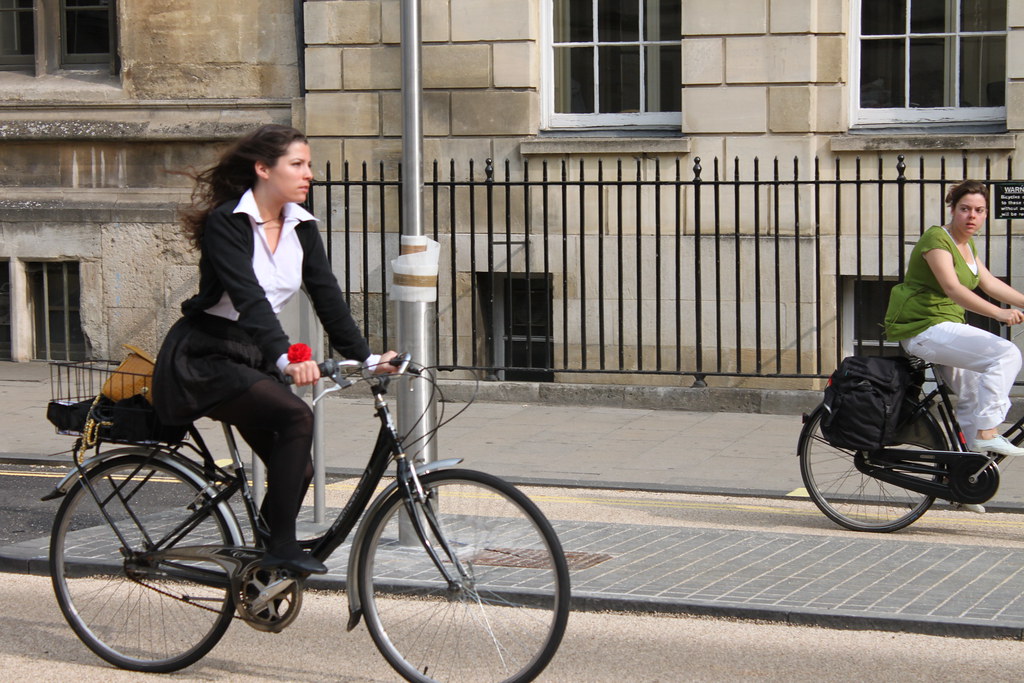
6. Beyond the Commute: The Joys of Recreational Cycling
While bikes are clearly workhorses, they’re also champions of fun! Bicycle riding isn’t just for getting to work or running errands; it’s a beloved recreational activity for people of all ages. “Bicycle touring,” also known as “cyclotourism,” is a fantastic way to explore and sightsee by bike for pure leisure. It’s become one of the most popular sports for recreational benefit, allowing you to see the world at a more intimate pace than from a car window.
Ever heard of a “brevet” or a “randonnée”? These are seriously cool organized long-distance rides that test endurance and offer incredible camaraderie. And speaking of laid-back cycling, one popular Dutch pleasure is simply enjoying a relaxed ride through the countryside. The Netherlands, being wonderfully flat and crisscrossed with public bicycle trails and cycle tracks, is truly ideal for recreational cycling because riders aren’t bothered by cars or other traffic. Many Dutch people even sign up every year for an event called “fietsvierdaagse,” which is four days of organized cycling through the local environment – imagine the fun!
Some of these events have a truly epic history. “Paris–Brest–Paris (PBP),” which first kicked off in 1891, holds the title for the oldest bicycling event still running regularly on the open road. It covers an astounding 1,200 km (746 mi) and challenges riders with a 90-hour time limit. Similar, albeit smaller, institutions exist in many countries, each with its own legacy and devoted following. These events aren’t just rides; they’re traditions!
A study conducted in Taiwan, for example, highlighted the profound impact of improving environmental quality for bicyclist tourists. They found that it led to greater health benefits for both tourists and locals alike. The number of bicyclists in Taiwan soared from 700,000 in 2008 to a staggering 5.1 million in 2017, proving that if you build it (safely and beautifully), they will ride! This surge resulted in the establishment of more and safer bicycle routes.
The Taiwanese study, based on extensive questionnaires and statistical analysis, revealed that cyclists’ top five decision factors for choosing a route are: safety, lighting facility, design of lanes, the surrounding landscape, and how clean the environment is. By focusing on these factors, they unlocked even more recreational benefits from bicycle tourism – a fantastic blueprint for any city wanting to boost its cycling appeal.
Cycling clubs are also a huge part of the recreational scene, holding organized rides where bicyclists of all levels can participate. These rides often start with a large group of riders, affectionately called the “mass,” “bunch,” or even “peloton,” which then thins out over the course of the journey. Many riders choose to stick together in groups of similar skill levels, taking advantage of drafting to conserve energy. Most organized rides, such as “cyclosportives” (or “gran fondos”), “Challenge Rides,” or “reliability trials,” and “hill climbs,” require registration and provide all the juicy details about start times and other requirements. Routes often vary significantly by mileage, sometimes by as much as 100 miles (160 km), and typically include several rest stops complete with refreshments, first aid, and even maintenance tools – everything you need for a fantastic day out!
And sometimes, organized rides are purely social events, focusing on community and fun rather than speed or distance. A perfect example is the monthly San Jose Bike Party, which can attract a massive attendance of one to two thousand riders in the summer months! Imagine that many bikes rolling through the streets, spreading good vibes and celebrating the sheer joy of cycling together. It’s a testament to how bikes can bring people together in truly wonderful ways.
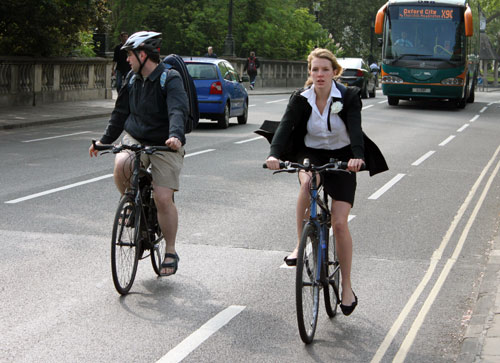
7. The Thrill of the Race: Diving into the World of Cycle Sport
If you thought recreational cycling was exciting, wait until we talk about racing! Almost immediately after bicycles were introduced, competitions sprang up independently in various parts of the world. Early races, especially those featuring the bone-shaker style bicycles, were, predictably, quite fraught with injuries – yikes! But by the 1890s, during what’s known as the “Golden Age of Cycling,” large races exploded in popularity across Europe, and even in the U.S. and Japan.
At one point, it felt like nearly every major city in the US boasted a velodrome or two for track racing events. However, since the mid-20th century, cycling has become a minority sport in the US, while in Continental Europe, it absolutely continues to thrive as a major sport, particularly in the United Kingdom, France, Belgium, Italy, and Spain. They seriously love their bikes over there!
And when you talk about bicycle racing, one event immediately springs to mind: the iconic Tour de France. This legendary race kicked off in 1903 and continues to capture the attention of the entire sporting world every single year. It’s a spectacle of human endurance, strategy, and incredible athleticism that transcends sports into pure legend. In 1899, an amazing feat happened when Charles Minthorn Murphy became the first man to ride his bicycle a mile in under a minute, earning him the nickname “Mile-a-Minute Murphy” – he achieved this incredible speed by drafting a locomotive in New York’s Long Island!
As the bicycle itself evolved into various forms, so did the racing formats. Road races are a huge category, involving both team and individual competition, and they’re contested in a multitude of ways. They range from thrilling one-day road races, criteriums, and time trials to epic multi-stage events like the Tour de France and its sister events, which collectively make up cycling’s Grand Tours. These are the pinnacle of road cycling, demanding everything from the riders.
But the racing world isn’t just about paved roads. There’s also track cycling, where specialized track bicycles are used in velodromes – those cool, banked oval tracks built specifically for speed. And then there are cyclo-cross races, which are held on challenging outdoor terrain that mixes pavement, grass, and mud, often featuring human-made obstacles like small barriers that riders either bunny hop over or dismount and quickly walk across. Time trial races, another form of road racing, are a pure test against the clock, where a rider races solo or as a team, often on specially designed bikes with aero bars for maximum aerodynamic efficiency.
In recent decades, mountain bike racing has also soared to international popularity and is now even an Olympic sport! This category boasts several exciting disciplines beyond just downhill, including cross country (XC), all mountain, trail, free ride, and the newly popular enduro. Each discipline requires its own unique blend of skill, strength, and nerve, pushing riders to their absolute limits on rugged, undulating terrain.
Professional racing organizations, like the Union Cycliste Internationale (UCI), the governing body of international cycle sport (which, by the way, sanctions races like the Tour de France), place specific limitations on the bicycles that can be used. For instance, in the late 1990s, they created rules prohibiting racing bicycles from weighing less than 6.8 kilograms (14.96 pounds) to ensure fair play and safety. The UCI rules also effectively ban some innovative bicycle frame designs, such as the recumbent bicycle, by requiring a traditional double triangle structure. Interestingly, recumbent bicycles were banned from bike races in 1934 after Marcel Berthet set a new hour record in his Velodyne streamliner, clocking an incredible 49.992 km on November 18, 1933. Talk about historical drama and evolving regulations in the world of cycle sport! It’s a dynamic and endlessly fascinating arena where human and machine push the boundaries of performance.
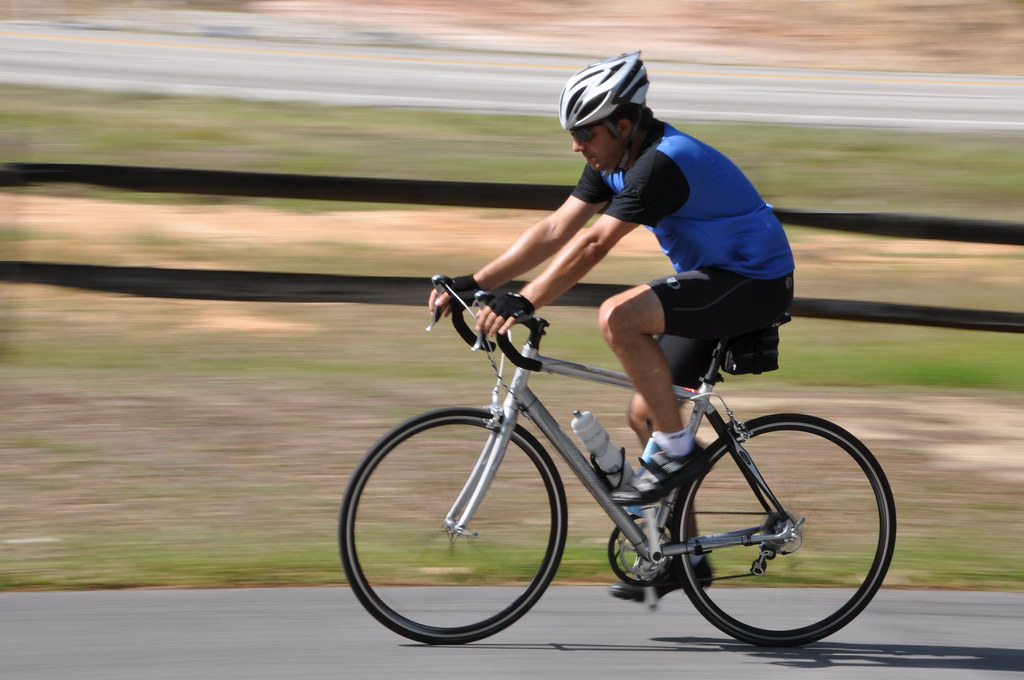
8. *Activism: Cycling for Change and Equality
Hold up, because cycling isn’t just about personal journeys; it’s a powerful engine for societal change! Many broad and correlated themes run in bicycle activism, with advocates pushing for the bicycle as a vital alternative mode of transport. It’s about recognizing the huge potential for energy and resource conservation, not to mention the incredible health benefits that come from choosing two wheels over a car. While these benefits are pretty much undisputed, the conversation really heats up around *how* we create the conditions to permit and encourage bicycle use for everyone.
Some dedicated bicycle activists, often including traffic management advisors, are all about constructing dedicated bike paths, cycle tracks, and bike lanes for every kind of journey. They point to the undeniable success of these facilities in promoting safety and encouraging more people to hop on their bikes, transforming cities into cycling havens. It makes perfect sense: if you build safe, accessible spaces, people will feel confident and excited to ride!
Then you have another school of thought, particularly from the “vehicular cycling” tradition, who look at these segregated facilities with a bit of suspicion. They advocate for a more holistic approach, famously based on the 4 ‘E’s: education for everyone, encouragement to apply that education, enforcement to protect everyone’s rights, and engineering to facilitate travel while respecting equal road rights. These groups often offer training courses, aiming to empower cyclists to integrate seamlessly and safely with other traffic flows.
But wait, there’s more! Critical Mass is this super cool, typically leaderless event that pops up on the last Friday of every month in cities worldwide, where bicyclists take to the streets en masse. While it originally aimed to highlight how unfriendly cities were to cyclists, its open structure means it’s about the direct action of riding together, celebrating bikes, and perhaps subtly protesting for a more bike-centric urban landscape. It’s a spontaneous, joyful, and often powerful demonstration of collective pedal power!
Cycling also plays a surprising role in battling inequality. Research in places like London shows that cyclists often tend to be ‘white, under 40, male, with medium to high household income,’ and studies from Germany confirm higher education levels often correlate with more cycling. This disparity has sparked various forms of activism focused on diversifying the cycling community, making sure that the joy and benefits of cycling are accessible to absolutely everyone. This push for inclusivity even sees groups like Street Riders NYC protesting systemic racism and police brutality on bikes, incidentally highlighting inequities in bike infrastructure as a form of classism. Plus, let’s not forget how the bicycle itself has acted as a powerful symbol and means for women’s liberation, forging strong links to feminism. Talk about a ride with a purpose!
9. Building Bridges: The Heart of Cycling Associations
You know, a passion as universal as cycling naturally brings people together, and that’s where cycling associations shine! Cyclists from all walks of life form these incredible groups, driven by shared interests, whether it’s developing trails, advocating for better road maintenance, mastering bike mechanics, championing urban design, or simply finding buddies for racing or touring. But it’s not just about specific hobbies; these associations often pursue bigger, global goals like energy conservation, pollution reduction, and the promotion of fitness for everyone.
Historically, some bicycle clubs and national associations became seriously prominent advocates for improving roads and highways – long before cars even dominated the scene! Take the League of American Wheelmen in the United States, for example. In the latter part of the 19th century, they lobbied tirelessly for better roads, founding and leading the national Good Roads Movement. It’s fascinating to think that their model for political organization, along with the paved roads they fought for, actually paved the way (pun intended!) for the growth of the automobile industry.
Fast forward to today, and these organizations are still making a massive impact. In Europe, the European Cyclists’ Federation (ECF) is a powerhouse, representing around 70 local, regional, and national civil society organizations across more than 40 countries. Their mission? To passionately promote cycling as a fantastic mode of transport and leisure, uniting voices from across the continent to create a truly bike-friendly Europe. It’s inspiring to see so many people coming together for the love of the ride!
On the competitive side, cycling as a sport is meticulously governed by international bodies. The Union Cycliste Internationale (UCI) in Switzerland is the global authority, sanctioning major races and setting crucial rules for upright bicycles. In the United States, USA Cycling (which merged with the United States Cycling Federation back in 1995) oversees the sport, while the International Human Powered Vehicle Association handles other human-powered vehicles. These organizations ensure fair play, safety, and the continued growth of competitive cycling worldwide.
But it’s not all about racing! The European Cyclists’ Federation also actively promotes cycling for transport and touring at a European level, with associated members reaching even further afield in Great Britain, Japan, and beyond. They help foster a global community, sharing best practices and celebrating the joy of two-wheeled travel. Regular conferences, like the Velo City series and global events coordinated by Velo Mondial, bring together experts and enthusiasts to discuss the future of cycling as transport, constantly pushing for innovation and wider adoption. It’s a vibrant, interconnected world out there!
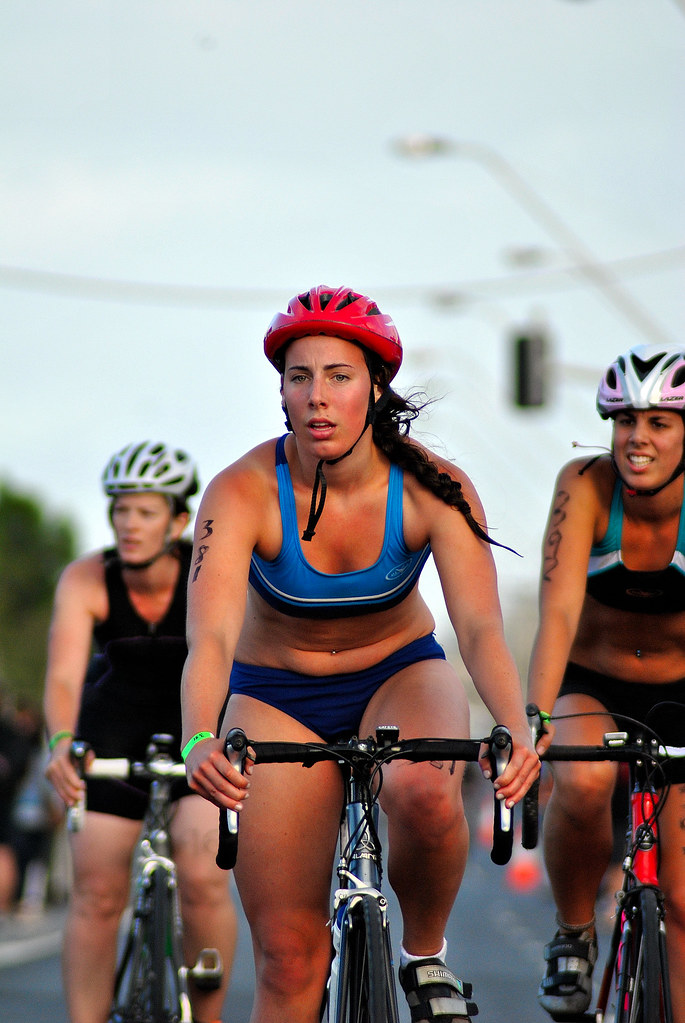
10. Your Daily Ride, Reimagined: Cycling as a Superior Transport
Let’s be real: sometimes getting around can be a real headache. But what if we told you that cycling is widely regarded as one of the most effective and efficient modes of transportation out there, especially for those short to moderate distances? It’s true! Think about it – bicycles offer a truckload of benefits compared to those gas-guzzling motor vehicles, making your daily commute or errand run a whole lot sweeter.
First off, there’s the built-in physical exercise, which is like a secret bonus health boost with every pedal stroke! Then, you’ve got super easy parking, which is a dream come true in congested urban areas. Plus, the sheer maneuverability of a bike means you can often zip through traffic that would leave cars gridlocked. And let’s not forget the incredible access to dedicated bike paths and rural trails, opening up new routes that are simply off-limits to cars. It’s about freedom, baby!
Beyond personal perks, cycling is a superstar for the planet. We’re talking reduced consumption of fossil fuels, way less air and noise pollution, and a significant drop in greenhouse gas emissions. Hello, cleaner air and quieter streets! And let’s give a huge round of applause for greatly reduced traffic congestion – imagine a world with fewer endless car queues, all thanks to more people on bikes. It’s a win-win for everyone, seriously.
And the best part? The financial savings are pretty sweet, both for you and for society as a whole. Cyclists face lower costs for fuel, maintenance, and parking, while society benefits from negligible damage to roads and less road area required for transport infrastructure. Some transit agencies are even fitting bicycle racks on the front of buses, cleverly expanding the areas they can serve and making it easier for you to combine cycling with public transport for longer journeys. How smart is that?
Of course, it’s not all sunshine and rainbows. Unless you’re on a tricycle or quadricycle, you do need a certain level of basic skill to stay upright, which isn’t always second nature for everyone. There’s also the reduced protection in crashes compared to motor vehicles, which is a serious consideration, alongside often longer travel times (though sometimes not in densely populated areas!). Then there’s the vulnerability to weather conditions – nobody loves cycling in a downpour – and the practical challenges of transporting passengers. And yes, a basic level of fitness is pretty helpful for tackling moderate to long distances. But honestly, when you weigh up the sustained physical exercise, the environmental gains, the financial perks, and the sheer joy of the ride, cycling often comes out on top. It’s not just transportation; it’s a lifestyle upgrade!
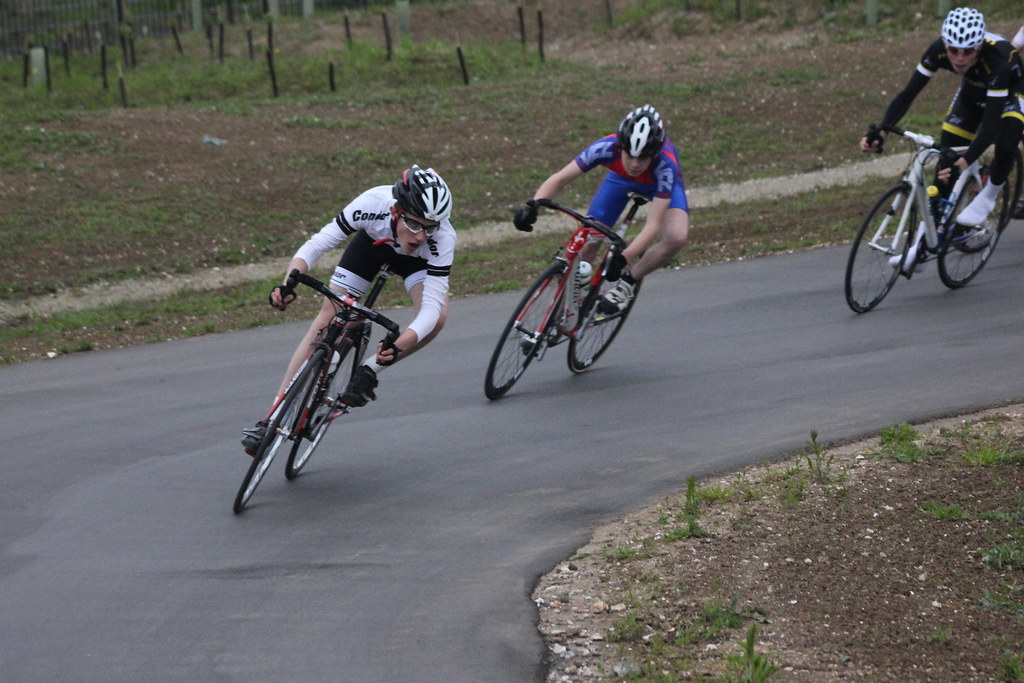
11. Unlocking Well-being: The Health Benefits of Cycling
Okay, prepare for some seriously good news, because cycling isn’t just about getting around; it’s a wellness powerhouse that can totally transform your health! We’re talking about a fantastic variety of health benefits that roll out with every pedal stroke, significantly reducing your risk of some pretty serious illnesses like cancers, heart disease, and diabetes – all common culprits linked to those sneaky sedentary lifestyles. It’s like a magic potion, but you have to earn it with a little effort!
Even if the weather isn’t cooperating or you prefer an indoor workout, stationary bikes are total game-changers. They’ve been widely used as a crucial part of rehabilitation, especially for lower limb injuries or after hip surgery, helping folks regain strength and mobility safely. It’s a gentle yet effective way to get moving and mend, proving that cycling can be incredibly adaptable to individual needs and recovery journeys.
Here’s a fun fact: a Dutch study found that the health benefits of cycling are so profound, they can actually extend lifespans by up to 14 months! While they also noted risks equated to a reduced lifespan of 40 days or less (hey, accidents happen, and the Netherlands is super bike-friendly, so risks might vary elsewhere), the mortality rate reduction was directly correlated to the average time spent cycling. We’re talking about approximately 6,500 deaths prevented by cycling, which is a truly mind-blowing statistic!
It’s no wonder then that global health organizations are singing cycling’s praises. The World Health Organization (WHO) actually ranks physical inactivity as second only to tobacco smoking as a health risk in developed countries, linking it to a 20-30% increased risk of various cancers, heart disease, and diabetes. This inactivity also racks up tens of billions of dollars in healthcare costs – a huge burden! The WHO’s 2009 report even calls increasing physical activity a public health “best buy,” and guess what? Cycling is labeled a “highly suitable activity” for this exact purpose.
So, if you’re looking for an accessible, enjoyable, and incredibly effective way to supercharge your health, cycling is your answer. The benefits far outweigh the risks when compared to a sedentary lifestyle, with studies showing ratios ranging from 9:1 to a staggering 96:1 in favor of cycling or walking versus no exercise at all. This includes a wide array of physical and mental outcomes, truly making cycling one of the smartest choices you can make for your overall well-being. Get ready to feel awesome!
Read more about: Pedal Power: Unlocking the Remarkable Health and Wellness Benefits of Cycling

12. The Ultimate Workout: How Cycling Boosts Your Body
Alright, fitness fanatics and anyone looking to feel fantastic, let’s zoom in on why cycling is absolutely one of the best workouts for your body! Every time you hop on that saddle, whether it’s a casual spin or a full-on sprint, you’re engaging in physical exercise that’s directly linked to increased health and an undeniable sense of well-being. It’s like a daily dose of feel-good science, powered by your own two legs!
Cycling is a stellar form of cardiovascular exercise, meaning it gets your heart pumping and your blood circulating like a boss. This isn’t just about feeling breathless; it significantly improves your cardiovascular health and strengthens so many muscles in your body, from your glutes and quads to your hamstrings and calves. It’s a full lower-body powerhouse workout that also engages your core for stability, making you stronger and more resilient from head to toe.
Recent studies have even focused on the incredible impact of cycling specifically for commutes. They’ve shown that trading your car for a bike ride to work can reduce your risk of cardiovascular outcomes by a significant 11%! And here’s a little extra sparkle: women, in particular, saw a slightly greater risk reduction than men, proving that cycling is a fantastic equalizer in the pursuit of heart health. So, ditch the traffic, embrace the pedals, and give your heart some serious love.
For anyone grappling with arthritis in their lower limbs, cycling is an absolute lifesaver. Unlike high-impact sports that can put immense strain on your knees and other joints, cycling is wonderfully low-impact. This means you can still get a powerful, effective workout without aggravating those sensitive areas, allowing you to stay active, maintain mobility, and manage pain more effectively. It’s inclusive fitness at its finest, offering a gentle yet potent path to strength and flexibility.
And get this: the charity Sustrans reports that investing in cycling provision can yield a whopping 20:1 return from health and other benefits! It’s been estimated that, on average, approximately 20 life-years are gained from the health benefits of road bicycling for every single life-year lost through injury. This isn’t just about individual gains; it’s a powerful public health strategy that pays dividends for entire communities. So, next time you’re debating a ride, remember you’re not just moving your body; you’re investing in a longer, healthier, and happier life!
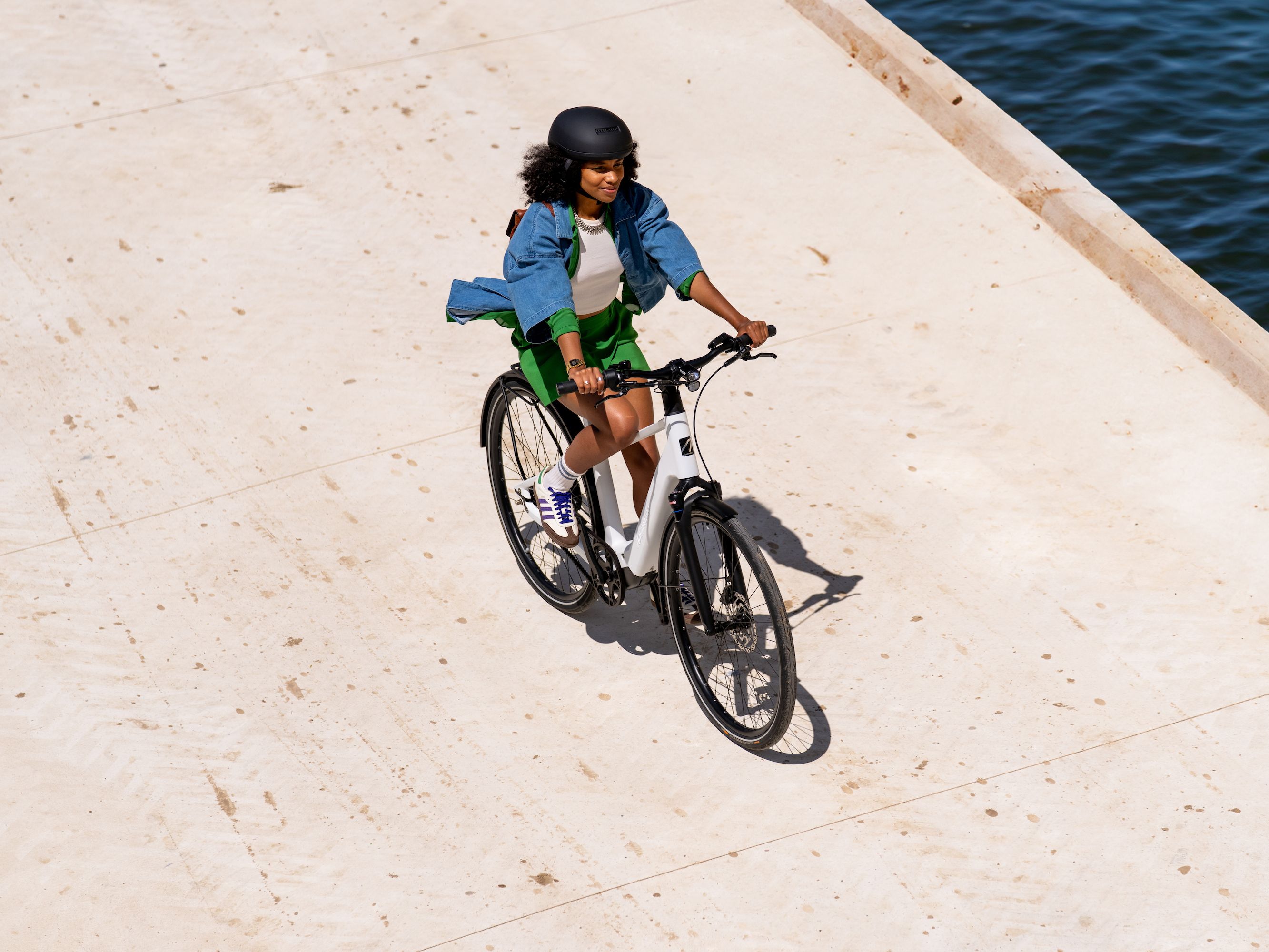
13. Beyond the Body: Cycling’s Mental Boost
While we’ve talked a lot about the incredible physical perks of cycling, let’s not overlook its profound impact on your mind! Regular riders consistently report significant mental health improvements, including a wonderful reduction in perceived stress and a noticeable boost in overall vitality. Think about it: the rhythmic motion of pedaling, the fresh air, the changing scenery – it’s a natural stress-buster, an instant mood elevator, and a fantastic way to clear your head from the daily grind.
Imagine leaving your worries behind with every revolution of the wheel. Cycling offers a unique blend of focused activity and environmental engagement that can be incredibly therapeutic. It’s a chance to disconnect from screens and deadlines, and reconnect with yourself and the world around you. That sense of accomplishment after a challenging climb, or the sheer joy of coasting downhill, contributes to a stronger sense of self-efficacy and confidence.
For many, cycling becomes a moving meditation. The predictable, repetitive movements can help calm an anxious mind, offering a welcome break from overthinking. The simple act of riding, being present in the moment, and experiencing your surroundings firsthand, can significantly enhance your mood and reduce feelings of anxiety or depression. It’s a powerful, natural antidepressant that’s always available, just waiting for you to hop on.
Studies have consistently shown that outdoor physical activity, like cycling, has a greater positive effect on mood and well-being than indoor exercise. The combination of green spaces, natural light, and the physical exertion creates a synergy that boosts happiness and reduces negative emotions. So, if you’re feeling a bit low or overwhelmed, a bike ride might just be exactly what the doctor ordered to refresh your perspective and rejuvenate your spirit.
It truly is incredible how much good a simple bicycle can do for your entire being. From boosting your physical health and extending your lifespan, to sharpening your mental clarity and lifting your spirits, cycling is a holistic approach to a better life. It’s a powerful reminder that sometimes, the best solutions are the simplest ones, waiting for us to embrace them one pedal stroke at a time.

14. The Unsung Heroes: Making Cycling Events Possible
Have you ever wondered what goes into making those incredible cycling events, like the Honolulu Century Ride, run so smoothly? Well, let us tell you, it wouldn’t be possible without a legion of truly wonderful, dedicated volunteers – the unsung heroes who contribute their time and energy before, during, and after ride day! These are the folks with the aloha spirit, organization skills, communication savvy, and boundless energy who make the magic happen.
For a massive event like the Honolulu Century Ride, there’s a whole lot of action behind the scenes. Think “Pre-Event Volunteering” – from stapling signs to A-frames at GP Roadways, to stuffing rider packets with numbers, route info, and goodies at Ala Wai Club House. They even manage rider packet pick-up and merchandise sales, guiding participants through the process with a friendly smile. And let’s not forget loading all the aid station equipment onto supply trucks at the HBL Office and setting up entire start and finish zones at Kapiolani Park – it’s a huge undertaking for a successful, smooth ride on Sunday!
Then comes the main event, “Event Day Setup/Support,” where the energy really kicks into high gear. Volunteers are busy preparing the start zone at Kapiolani Park, making sure everything is perfect when riders arrive, and acting as Parking Lot Attendees to ensure safe movement. They handle Kapiolani Late Registration/Pickup, providing a friendly guide for early morning registrants, and even serve as Group Flag Bearers, calmly guiding excited riders into the correct starting zones based on speed and experience, ensuring a smooth, organized launch!
Once the riders are off, it’s not time to relax! Kapiolani Park General Help volunteers move archways and barricades to set up the finish. The HBL Tent is a hub of activity, with folks selling merchandise, managing lost and found, providing information (with bilingual volunteers crucial for Japanese participants!), and recording miles for the Iron Okole Challenge. Meanwhile, in the Command Tent, volunteers support officials, ensuring safety and a smooth rollout, ready to act in emergencies.
But the support doesn’t stop at the park; it extends all along the course! “Aid Stations and Route Support” volunteers are deploying signs, driving supply trucks loaded with drinks, snacks, and medical/mechanical support to various aid stations like Seven Eleven in Kahaluu and JAIMS in Hawaii Kai. “Course Marshals” are the eyes and ears of the HCR Command Center, patrolling the route in their magnetic-signed vehicles, providing help, minor repairs, or assistance to any rider in need, making sure everyone is comfortable and safe. Medical Support volunteers, with their essential training, are stationed at aid stations for high-quality first aid. Finally, after the last rider passes, the “Signage Retrieval” team collects all the signs, and the aid station trucks are unloaded back at the HBL office.
It’s truly a monumental effort, and it’s a testament to the power of community coming together for the love of cycling. So, the next time you see a volunteer at a cycling event, give them a huge shout-out – they are the heart and soul that makes these incredible experiences possible for thousands of riders! They truly embody the spirit of aloha and the dedication needed to keep the wheels turning, creating vibrant, unforgettable moments for everyone involved.
Wow, what a ride it’s been! From the stealthy history of bikes in warfare to their starring role in boosting mental health and connecting communities, we’ve pedaled through a fascinating landscape of two-wheeled wonders. It’s clear that cycling is far more than just a means of transport; it’s a powerful force for personal well-being, societal change, and pure, unadulterated fun. Whether you’re a seasoned pro, a weekend warrior, or someone just starting to feel the call of the open road, the world of cycling has something truly special to offer. So, go on, embrace the wind in your hair, the rhythm of your pedals, and the endless possibilities that await on two wheels. The adventure, the community, and a healthier, happier you are all just a ride away. Keep spinning, friends, and let’s keep making the world a more bike-friendly, joy-filled place, one pedal stroke at a time!



